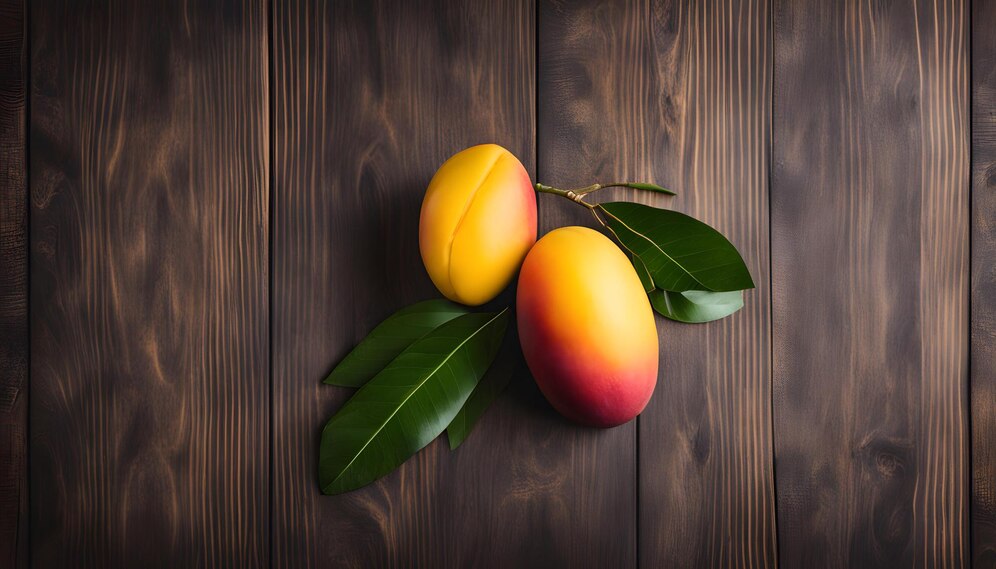When it comes to mangoes, one name stands above all others—the Alphonso mango. Revered for its unparalleled flavor, creamy texture and vibrant aroma, the Alphonso mango is often referred to as the “King of Fruits.” Cultivated primarily in India, this mango variety is a symbol of summer, a culinary treasure, and a beloved fruit enjoyed by people all over the world. But what makes the Alphonso mango so special, and how does it compare to other mango varieties? Let’s dive deep into the world of this exquisite fruit.
The Origins of Alphonso Mango
The Alphonso mango also known as “Hapus” in Western India has a storied history that traces back to the western coast of India, particularly the state of Maharashtra. This region’s unique climate and soil conditions create the perfect environment for growing these luscious mangoes. The fruit is named after Afonso de Albuquerque, a Portuguese general and military expert who played a significant role in establishing the Portuguese colony in India during the 16th century. He was instrumental in bringing grafting techniques to the region, which helped in cultivating this superior variety of mango.
Why Alphonso Mango is the Pinnacle of Mangoes
1. Unmatched Flavor Profile
Alphonso mangoes are renowned for their rich, creamy, and buttery texture that melts in your mouth. The sweetness of this mango is perfectly balanced with a slight tartness, giving it a complex and satisfying flavor. Unlike other mango varieties that might be too fibrous or bland, the Alphonso is packed with juice and an intense mango aroma that makes every bite a delightful experience.
2. Vibrant Appearance and Aroma
The visual appeal of the Alphonso mango is undeniable. With its golden-yellow skin tinged with a hint of saffron, the fruit looks as enticing as it tastes. The skin is smooth and thin, giving way to the succulent flesh inside. But it’s not just the appearance that captivates; the fragrance of an Alphonso mango is intoxicating. The sweet, floral aroma fills the air as soon as you cut into it, heightening the anticipation of the first bite.
3. Superior Texture and Consistency
Texture is another area where Alphonso mangoes outshine their counterparts. The flesh of the Alphonso is exceptionally smooth, devoid of the fibrous strands that can often make other mangoes less enjoyable. This smooth consistency contributes to its luxurious mouthfeel, making it ideal for eating fresh, blending into smoothies, or using in desserts.
4. Nutritional Powerhouse
Beyond its delightful taste, the Alphonso mango is also a nutritional powerhouse. Rich in vitamins A and C, as well as essential minerals like potassium and magnesium, this fruit supports overall health. The high antioxidant content helps in fighting free radicals, promoting healthy skin, and boosting the immune system. Additionally, mangoes are a good source of dietary fiber, aiding in digestion and promoting gut health.
Comparing Alphonso to Other Mango Varieties
While the Alphonso mango is often hailed as the best, it’s worth understanding how it compares to other popular mango varieties, particularly the Tommy Atkins mango, which is more commonly found in supermarkets outside of India.
1. Alphonso vs. Tommy Atkins Mango
Flavor: The most striking difference between the two is the flavor. Alphonso mangoes have a rich, sweet taste with a hint of tartness, making them incredibly flavorful. In contrast, Tommy Atkins mangoes have a much milder, sometimes bland flavor, which can be disappointing to those who have experienced the burst of taste that Alphonso offers.
Texture: Alphonso mangoes are known for their smooth, creamy texture that melts in the mouth. On the other hand, Tommy Atkins mangoes tend to be more fibrous, which can make them feel tougher and less enjoyable to eat.
Appearance: While Alphonso mangoes boast a deep marigold yellow color, Tommy Atkins mangoes have a red-green skin that can be visually appealing but doesn’t necessarily indicate superior taste.
2. Alphonso vs. Kesar Mango
Another popular Indian mango variety is the Kesar mango, often referred to as the “Queen of Mangoes.” While Kesar mangoes are also delicious and share a similar smooth texture with the Alphonso, they are typically sweeter and less tangy. The Kesar mango is also slightly smaller and has a more orange hue compared to the bright yellow of the Alphonso.
3. Alphonso vs. Haden Mango
The Haden mango, another variety found primarily in the Americas, offers a different experience. While it has a good balance of sweetness and acidity, the Haden mango has more fibrous flesh compared to the Alphonso. Its flavor, while pleasant, lacks the complexity and richness that make Alphonso the preferred choice for mango connoisseurs.
The Cultural Significance of Alphonso Mango
In India, the arrival of Alphonso mangoes signals the start of summer. This fruit is not just a treat; it’s a celebration of the season. Mangoes, particularly the Alphonso variety, play a central role in Indian culture and cuisine. They are used in a variety of traditional dishes, from sweet desserts like mango lassi and aamras to savory pickles and chutneys.
1. Alphonso in Indian Cuisine
In Indian households, Alphonso mangoes are often consumed fresh, but their versatility makes them a key ingredient in numerous recipes. Aamras, a sweet mango pulp often served with puri (a type of Indian bread), is a favorite dish during the summer months. Mango lassi, a refreshing yogurt-based drink, is another popular way to
enjoy the Alphonso mango. Its rich flavor and creamy texture make it perfect for blending into a smooth, delightful beverage that cools you down on a hot day.
Mangoes are also used in savory dishes, such as mango chutneys and pickles. The Alphonso’s natural sweetness and slight tartness add a unique depth of flavor to these condiments, which are often served alongside traditional Indian meals. In some regions, the mango is even used in curries, where its sweetness complements the spices, creating a harmonious balance of flavors.
2. Alphonso Mango in Festivals and Traditions
The Alphonso mango holds a special place in Indian festivals and rituals. During the Hindu festival of Gudi Padwa, which marks the New Year in Maharashtra, Alphonso mangoes are often included in the offerings made to deities. The fruit’s vibrant color and sweet taste symbolize prosperity and new beginnings.
In addition, Alphonso mangoes are commonly gifted during the summer months as a gesture of goodwill and affection. It’s not unusual for families and friends to exchange boxes of these prized mangoes, further cementing their status as a fruit of honor and celebration.
Growing and Harvesting Alphonso Mangoes
Cultivating Alphonso mangoes is both an art and a science. The trees thrive in the warm, humid climate of the Konkan region of Maharashtra, where the combination of coastal breezes and fertile soil creates the perfect growing conditions. However, growing these mangoes requires careful attention to detail and a deep understanding of the fruit’s needs.
1. The Lifecycle of an Alphonso Mango Tree
An Alphonso mango tree typically takes about three to four years to begin bearing fruit after being planted. The trees bloom with fragrant flowers in the winter months, which are then pollinated to form small mangoes. These mangoes grow throughout the spring and are ready for harvest in the summer, usually from late March to early June.
Farmers must be vigilant during the growing season, ensuring that the trees receive adequate water and are protected from pests and diseases. The use of organic farming methods is common, as it helps preserve the natural flavors and quality of the fruit.
2. Harvesting and Post-Harvest Care
Harvesting Alphonso mangoes is a delicate process. The fruit is typically picked by hand to avoid bruising and ensure that each mango is in perfect condition. Once harvested, the mangoes are sorted and graded based on size and ripeness.
Post-harvest care is crucial to maintaining the quality of the fruit. Alphonso mangoes are often ripened naturally by placing them in straw-lined crates or boxes, allowing the fruit to develop its full flavor and aroma. Some farmers use controlled ripening techniques to ensure consistency and extend the fruit’s shelf life.
The Global Demand for Alphonso Mangoes
Alphonso mangoes are not only beloved in India but have also gained a significant following worldwide. The fruit’s superior quality has made it a sought-after delicacy in countries like the United States, the United Kingdom, and the Middle East. Exporting Alphonso mangoes has become a lucrative business, with millions of mangoes being shipped abroad each year.
1. Alphonso Mangoes in International Markets
The demand for Alphonso mangoes in international markets is driven by their unique flavor and texture, which sets them apart from other mango varieties commonly available in supermarkets. In countries with large Indian diasporas, Alphonso mangoes are eagerly awaited each summer, with specialty stores and online retailers offering them to customers who crave a taste of home.
2. Challenges in Exporting Alphonso Mangoes
Exporting Alphonso mangoes, however, is not without its challenges. The fruit’s delicate nature makes it susceptible to damage during transit, requiring careful packaging and handling. Additionally, strict import regulations in some countries can pose hurdles, as the fruit must meet specific quality and safety standards.
Despite these challenges, the global appetite for Alphonso mangoes continues to grow, driven by the fruit’s reputation as the best of the best. Whether enjoyed fresh, blended into a smoothie, or used in a dessert, the Alphonso mango remains a symbol of luxury and indulgence.
The Future of Alphonso Mangoes
As the popularity of Alphonso mangoes continues to rise, there are several trends and innovations shaping the future of this beloved fruit.
1. Sustainable Farming Practices
With increasing awareness of environmental issues, many Alphonso mango farmers are adopting sustainable farming practices. These include using organic fertilizers, conserving water through drip irrigation, and implementing integrated pest management systems. By embracing sustainability, farmers can ensure the long-term health of their orchards and continue producing high-quality mangoes for generations to come.
2. Expanding Cultivation Regions
While the Konkan region remains the heart of Alphonso mango cultivation, efforts are being made to expand the growing regions to other parts of India and beyond. This could help meet the growing demand for the fruit and make Alphonso mangoes more accessible to consumers around the world.
3. Innovations in Processing and Preservation
To extend the availability of Alphonso mangoes beyond the short summer season, innovations in processing and preservation are being explored. These include freeze-drying and vacuum-packing the fruit, which preserves its flavor and nutritional content for longer periods. Such innovations could make it possible for consumers to enjoy Alphonso mangoes year-round, regardless of where they live.
Conclusion
The Alphonso mango is more than just a fruit—it’s a cultural icon, a symbol of summer, and a testament to the rich agricultural heritage of India. With its unparalleled flavor, creamy texture, and vibrant aroma, it’s no wonder that the Alphonso mango is revered as the King of Fruits.
Whether you’re savoring a fresh slice of Alphonso mango on a hot summer day, blending it into a refreshing smoothie, or incorporating it into a traditional Indian dish, you’re not just enjoying a fruit—you’re experiencing a piece of history, culture, and tradition that has been cherished for centuries.







